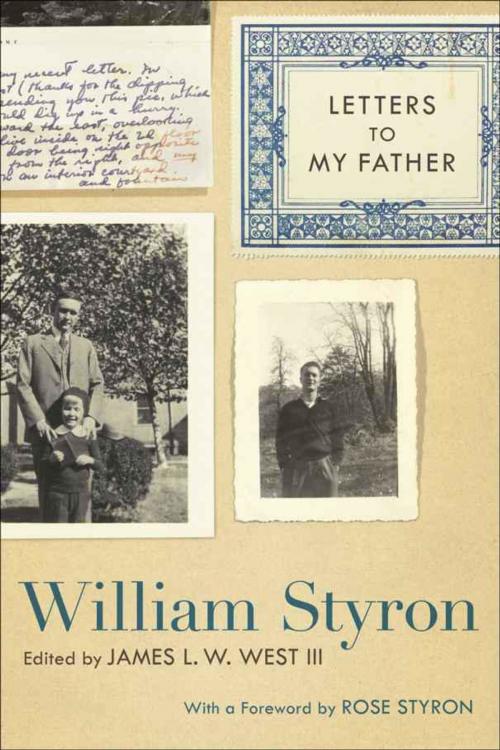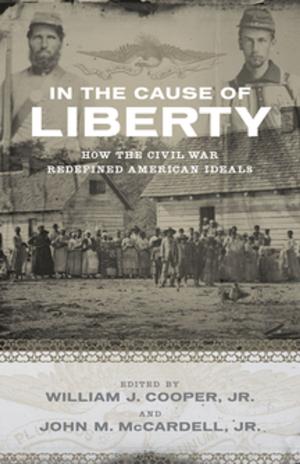Letters to My Father
Fiction & Literature, Literary Theory & Criticism, American, Biography & Memoir, Literary, Anthologies| Author: | William Styron | ISBN: | 9780807136768 |
| Publisher: | LSU Press | Publication: | September 1, 2009 |
| Imprint: | LSU Press | Language: | English |
| Author: | William Styron |
| ISBN: | 9780807136768 |
| Publisher: | LSU Press |
| Publication: | September 1, 2009 |
| Imprint: | LSU Press |
| Language: | English |
“I’ve finally pretty much decided what to write next—a novel based on Nat Turner’s rebellion,” twenty-six-year-old William Styron confided to his father in a letter he wrote on May 1, 1952. Styron would not publish his Pulitzer Prize–winning The Confessions of Nat Turner until 1967, but this letter undercuts those critics who later attacked the writer as an opportunist capitalizing on the heated racial climate of the late 1960s. From 1943 to 1953, Styron wrote over one hundred letters to William C. Styron, Sr., detailing his adventures, his works in progress, and his ruminations on the craft of writing. In Letters to My Father, Styron biographer James L. W. West III collects this correspondence for the first time, revealing the early, intimate thoughts of a young man who was to become a literary icon. Styron wrote his earliest letters from Davidson College, where he was very much unsure of himself and of his prospects in life. By the last few letters, however, he had achieved a great deal: he had earned a commission in the Marine Corps, survived World War II, published the novel Lie Down in Darkness (1951) and the novella The Long March (1953), and won the Prix de Rome. He had also recently married and was about to return to the United States from an expatriate period in Paris and Rome. The letters constitute a portrait of the artist as a young man. They read like an epistolary novel, with movement from location to location and changes in voice and language. Styron was extremely close to his father and quite open with him. His story is a classic one, from youthful insecurity to artistic self-discovery, capped by recognition and success. There are challenges along the way for the hero—poor academic performance, a syphilis scare, writer’s block, temporary frustration in romance. But Styron overcomes these difficulties and emerges as a confident young writer, ready to tackle his next project, the novel Set This House on Fire (1960). Rose Styron, the author’s widow, contributes a prefatory memoir of the senior Styron. West has provided comprehensive annotations to the correspondence, and the volume also has several illustrations, including facsimiles of some of the letters, which survive among Styron’s papers at Duke University. Finally, there is a selection of Styron’s apprentice fiction from the late 1940s and early 1950s. In all of American literature, no other extended series of such letters—son to father—exists. Letters to My Father offers a unique glimpse into the formative years of one of the most admired and controversial writers of his time.
“I’ve finally pretty much decided what to write next—a novel based on Nat Turner’s rebellion,” twenty-six-year-old William Styron confided to his father in a letter he wrote on May 1, 1952. Styron would not publish his Pulitzer Prize–winning The Confessions of Nat Turner until 1967, but this letter undercuts those critics who later attacked the writer as an opportunist capitalizing on the heated racial climate of the late 1960s. From 1943 to 1953, Styron wrote over one hundred letters to William C. Styron, Sr., detailing his adventures, his works in progress, and his ruminations on the craft of writing. In Letters to My Father, Styron biographer James L. W. West III collects this correspondence for the first time, revealing the early, intimate thoughts of a young man who was to become a literary icon. Styron wrote his earliest letters from Davidson College, where he was very much unsure of himself and of his prospects in life. By the last few letters, however, he had achieved a great deal: he had earned a commission in the Marine Corps, survived World War II, published the novel Lie Down in Darkness (1951) and the novella The Long March (1953), and won the Prix de Rome. He had also recently married and was about to return to the United States from an expatriate period in Paris and Rome. The letters constitute a portrait of the artist as a young man. They read like an epistolary novel, with movement from location to location and changes in voice and language. Styron was extremely close to his father and quite open with him. His story is a classic one, from youthful insecurity to artistic self-discovery, capped by recognition and success. There are challenges along the way for the hero—poor academic performance, a syphilis scare, writer’s block, temporary frustration in romance. But Styron overcomes these difficulties and emerges as a confident young writer, ready to tackle his next project, the novel Set This House on Fire (1960). Rose Styron, the author’s widow, contributes a prefatory memoir of the senior Styron. West has provided comprehensive annotations to the correspondence, and the volume also has several illustrations, including facsimiles of some of the letters, which survive among Styron’s papers at Duke University. Finally, there is a selection of Styron’s apprentice fiction from the late 1940s and early 1950s. In all of American literature, no other extended series of such letters—son to father—exists. Letters to My Father offers a unique glimpse into the formative years of one of the most admired and controversial writers of his time.















